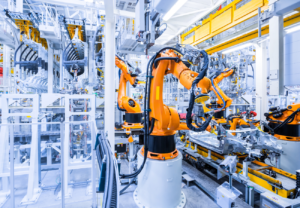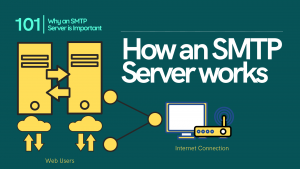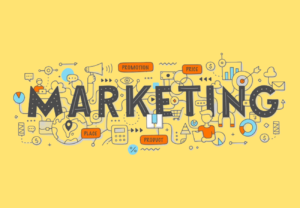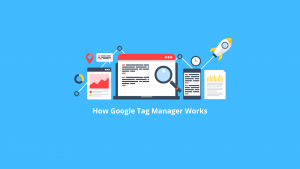Augmented Reality (AR) is an interactive experience that enhances the real world with computer-generated perceptual information. Suppose you’ve used a street view service to get to know a neighborhood before traveling or an interior decoration app to see what furniture looks like in your living room. In that case, you’ve already experienced Augmented Reality.
In entertainment, there are plenty of AR examples: filters that alter a person’s appearance in a photo, games that blend real and virtual spaces, and apps that place virtual characters within a physical environment. We can say that Augmented Reality is a revolutionary technology that meets specific business needs in several surprising and innovative ways.
It’s also one of the pillars of Industry 4.0, the fourth industrial revolution transforming business just as previous revolution processes have in centuries past. Industry 4.0 has reinvented how companies design, manufacture, and distribute products. Consider technologies like the Industrial Internet of Things (IIoT), cloud connectivity, AI, and machine learning.
They are now deeply woven into the manufacturing process. This unified and integrated approach to manufacturing results in products, factories, and assets that are connected and intelligent. An AI- and ML-powered infrastructure is one significant transformational step to combine the power and efficiency of advanced tech with the ingenuity and creativity of humans.
Understanding What Augmented Reality (AR) Means For Industry 4.0
To enumerate, Augmented Reality (AR) is an interactive experience that enhances the real world with computer-generated perceptual information. Using software, apps, and hardware such as AR glasses, augmented reality overlays digital content onto real-life environments and objects. This enriches the User Experience (UX) and turns one’s immediate surroundings into magic.
The most promising Augmented Reality uses bring efficiencies to business processes, including assembly work, repairs and field service, and designs of new manufacturing spaces. Using Augmented Reality in the manufacturing industry can help technicians make repairs faster by guiding them to the problem and providing information on repairs and needed parts.
Uniquely, AR powers up innovative businesses. It could be an interactive learning environment, precious in manufacturing, Industry 4.0, and other manufacturing processes. It allows industrial users to become “one” with the systems and machines they work with and to optimize and augment technology and IoT networks with human ingenuity, observation, and creativity.
Be that as it may, Industry 4.0 is built on very profound technology pillars. These innovations bridge the physical and digital worlds and make intelligent and autonomous systems possible. Businesses and supply chains already use some of these advanced technologies, but the full potential of Industry 4.0 comes to life when they’re used together with AR systems.
The most common uses include:
- Tools design and product development: Imagine being able to prototype virtual objects that designers and potential users can walk around and examine from every angle. Thanks to augmented reality, digital twins, and the IoT, product designers can bring products to life, test them, and adjust them before anything physical is ever built.
- Maintenance, operational control, and safety: With AR, workers can gain immediate information on any machine they interact with. They can access the latest user manual or connect with an expert anywhere in the world to help them assess or repair an issue. This supports continuous production and non-disruptive performance.
- Employee and operator training and learning: Augmented reality allows employees to get trained on any machine or equipment “on demand,” turning their immediate surroundings into an ongoing learning platform. It can also provide environments and scenarios that allow employees to hone their skills while increasing productivity and safety.
- Assured product quality control: Incorporating AR into quality control and assurance can help prevent defects during production, optimize the production process, and reduce time to market. For example, technicians wearing AR glasses can view a product and get information from IoT sensors embedded in the components that generate crucial product data.
Bring the data-driven power of Industry 4.0 to your entire business. With SAP solutions, you can not only run intelligent and autonomous manufacturing processes in your factories – you can develop innovative products, manage smart assets and equipment, and empower your people with the latest technologies for IoT monitoring and decision support.
From Fantasy To Factory | How Augmented Reality (AR) Tools Work
Augmented Reality began in a Lab At Harvard in the 1960s, and over the years, it has been used for entertainment, defense, sports, and gaming apps, among others. But these new industrial applications aren’t about capturing Pokémon. AR wearables are emerging as a viable option for workers because of better materials, batteries, and computing power packed small.
Most system tools work by overlaying a connected Graphic Interface through AR software on top of reality. For example, production line workers wearing AR glasses will see the component they’re working on, plus an instruction diagnostic or a video showing them what to do. AR can also be used with smartphones and tablets before a machine, component, or other object.
Usually, Augmented Reality works by superimposing digital information onto real-world objects to create a 3D experience that allows users to interact with both the physical and digital worlds. But AR does not and cannot exist in a silo; its value is being part of a cloud-connected Industry 4.0 ecosystem that incorporates everything from big data to automated robots.
With Industry 4.0 solutions and Augmented Reality Technology from a company such as SAP, you can bring data-driven processes and operational flexibility to the entire business. You can apply SAP’s potentially winning strategic initiatives by putting intelligence into products, factories and logistics, assets, and people. SAP provides critical solutions for Industry 4.0.
An overview of the augmented reality process:
- An AR-enabled device with a camera, such as smart glasses, a tablet, or a smartphone, parses a video feed to identify a physical object or the environment around the user, such as a piece of machinery or a warehouse layout.
- A digital twin – a 3D digital replica of the object in the cloud – connects the real and virtual environments. It collects information from physical objects and digital elements.
- The augmented reality device then downloads information about the object from the cloud. It superimposes digital data over the thing using markers or trackers like GPS, accelerometers, orientation and barometric sensors, and more. This creates a part-real, part-digital 3D interface.
- Thanks to real-time data flowing from products, the user can interact with the object or environment by moving around and sending commands to the cloud through a touchscreen, voice, or gestures.
It’s worth mentioning that with the help of Augmented Reality, you can combine the power of digital manufacturing in factories and plants with end-to-end business process execution across the supply chain. Equally important, you can develop connected, self-aware products that share information about their health, location, usage level, storage conditions, and more.
In the next section, we’ll learn how AR powers up Industry 4.0. The general definition of Industry 4.0 is the rise of digital industrial technology … Industry 4.0 transformations allow us to work alongside machines in new, highly productive ways. Learn more about SAP solutions for intelligent factories, intelligent products, intelligent industry assets, empowered people, etc.
The Mixed Reality Vs. Augmented Reality Vs. Virtual Reality Differences
Businesses use AR-powered apps to offer step-by-step guides, documentation, manuals, and more to help train new workers and upskill existing teams. Hands-on training in digital environments can support or replace human trainers and make the workplace safer. And it’s all possible because AR offers easy access to information from anywhere worldwide with 3D models.
Plus, step-by-step instructions and opportunities for collaboration. Still, Gartner notes that “smart manufacturing requires synchronizing activities for capability building, capability enablement, and empowering people.” AR technology does just that as part of a collection of 4.0 technologies that work together to achieve genuinely optimized industries and enterprises.
Today’s Industry 4.0 initiatives look to develop symbiotic and rewarding collaborations between people and technology. When the accuracy and speed of 4.0 tools come together with your people’s creativity, talent, and innovation, you get a win/win for both your workforce and your bottom line. Your manufacturing operations become more efficient and productive.
As a result, your teams are also relieved of many mundane and repetitive tasks — allowing them to collaborate with intelligent technologies and better equip themselves for the evolving technological landscape and the AI-powered future of work. Augmented, virtual, and mixed reality differences are subtle; each type interacts differently with the real and virtual worlds.
Differences:
- Virtual Reality: Usually, Virtual Reality (VR) removes people from the real world and fully immerses them in a virtual world using a head-mounted display or headset. In that virtual world of imagery and sounds, users can move around in all directions, manipulate objects, and more. VR is often used in healthcare, architecture, and education.
- Augmented Reality: AR enhances or expands the real world with digital information. While augmented reality apps work through mobile devices such as smartphones or tablets, in manufacturing and industrial settings where it benefits the user to have their hands free, glasses or headsets are the best gateways to the AR experience.
- Mixed Reality: MR blends imagination and reality so that users can simultaneously see and interact with the natural world and virtual environment. Think of playing a virtual video game while drinking real coffee and offering an imaginary character some of your coffee in your game – you’re mixing realities.
Industry 4.0 can be defined as the integration of intelligent digital technologies into manufacturing and industrial processes. It encompasses a set of technologies that include industrial IoT networks, AI, Big Data, robotics, and automation. Industry 4.0 allows for smart manufacturing and the creation of intelligent factories. It aims to enhance productivity and efficiency.
In addition, AR also aims to improve flexibility while enabling more intelligent decision-making and customization in manufacturing and supply chain operations. ”The general definition of Industry 4.0 is the rise of digital industrial technology … Industry 4.0 transformations allow us to work alongside machines in new, highly productive ways.” — Daniel Burrus.
The Fourth Industrial Revolution Evolvement Into Industry 4.0
The seamless integration of several systems, tools, and innovations defines the fourth industrial revolution. Before determining a route, you need to know your starting point. An excellent first step is to audit and analyze existing processes, assets, and business systems. This will tell you where you are, help establish priorities, and even identify quick wins.
Any definition of Industry 4.0 must also include its origin from the Fourth Industrial Revolution. Since the 1800s, we have experienced three industrial revolutions. They were called “revolutions” because the innovation that drove them didn’t just slightly improve productivity and efficiency – it completely revolutionized how goods were produced, and work was done.
On that note, it’s worth noting that we are now in the Fourth Industrial Revolution, aka Industry 4.0. Remember that a single technology does not characterize Industry 4.0. Whereby we can summarize all the evolutionary changes that have driven the industrial revolution for businesses to this date as follows;
Stage #1: First Industrial Revolution
By the early 1800s, the First Industrial Revolution was underway. The invention of the steam engine reduced industrial reliance on animal and human labor, ushering in a new age of manufacturing and precision engineering.
Stage #2: Second Industrial Revolution
A century later, the growing use of petroleum and electric power meant that machinery could be leaner and less cumbersome. The Second Industrial Revolution was driven by the assembly line and mass production processes, many of which are still used today.
Stage #3: Third Industrial Revolution
Around the middle of the 20th century, computers hit the scene. The Third Industrial Revolution saw the early development of factory automation and robotics. This era also saw the first use of computerized business systems built to manage and analyze data.
Stage #4: Fourth Industrial Revolution
Today, manufacturing is increasingly powered by information. Vast amounts of data come from across the business and worldwide, in real time, around the clock. AI is at the heart of the Fourth Industrial Revolution, allowing manufacturers to gather and use all that data to analyze, predict, understand, and report.
In Industry 4.0, AR can be used for everything from asset identification to knowledge transfer to training. By incorporating the physical with the virtual to augment how people work, augmented reality gives workers more information and context about the product or machines they’re working on and the world around them. That said, learn about SAP Solutions for Industry 4.0.
The Topmost Augmented Reality (AR) Examples In Real Time Actions
As mentioned, Augmented Reality is widely used in manufacturing industries in various creative ways. Businesses use AR-powered apps to offer step-by-step guides, documentation, manuals, and more to help train new workers and upskill existing teams. Hands-on training in digital environments can support or replace human trainers and make the workplace safer.
And it’s all possible because Augmented Reality offers easy access to information from anywhere in the world at any time with 3D models, step-by-step instructions, and opportunities for collaboration. Imagine creating a digital twin of your factory floor so that workers can do maintenance work more efficiently and remotely and optimize work on production lines.
Digital Twins can also create mock-ups showing how a finished product will work, incorporate customer requests into designs, and help manage predictive maintenance and damage control. Still, Industry 5.0-Type Integration is also possible with digital twin technology, where the digital twin acts as a clone of the physical object paired with IoT, making this possible.
As a result of the Amazon Effect, today’s customers expect to receive their orders fast, and AR-optimizing Warehouse Management and workflow with Augmented Reality can help make that happen. With an AR-powered warehouse app, employees can acquire data about orders and instructions to fulfill each order most efficiently and scan barcodes for them.
The benefits of augmented reality:
- Improved product development: Implementing AR during the design phase makes it possible for designers to respond to modern consumer demands for shorter product lifecycles and reduce costs associated with prototyping.
- Simplified processes: Visualised workflows offering step-by-step instructions can support predictive troubleshooting while reducing mistakes that cause rework and speeding up complex assembly tasks for workers.
- Streamlined warehouse management: AR can save time by managing inventory levels, guiding product picking, minimizing downtime by making it easier for technicians to diagnose and fix problems, and enhancing employee training.
- Increased worker engagement: Because AR is a relatively new technology, the immersive quality of the 3D experience and the ability to learn virtually is still novel for workers, boosting their engagement with the task at hand.
- Reduced risk: AR doesn’t just replace the work or function of actual equipment and people. It creates a safe, experiential learning space to allow workers to practice tasks virtually without risk, improving worker safety, inspection, training, and workflow.
Generally, the automated AR process helps in saving time on manual barcode scanning. And once the order is complete, the inventory system is automatically updated. Be that as it may, your Industry 4.0 digital transformation journey can begin from wherever you are today. Every move toward a more connected AI- and ML-powered infrastructure is one significant step.
The Best Practices To Make Your Business Ready For Industry 4.0
For your information, Augmented Reality benefits complex products because humans might struggle to remember the many parts and assembly specifics required. An Augmented Reality application can provide that for them as they work. With Augmented Reality, the exciting thing is that remote collaboration is one of the significant applications of this technology.
Suffice it to say that many companies already doing some pilot projects quickly wants to scale the technology. Getting started with Augmented Reality is becoming easier because some industrial supply companies offer AR as a Service as an add-on to their current products and Software-as-a-Service (SaaS) to help optimize their resources. Watch the video below to learn more:
Industry 4.0 solutions will significantly benefit and impact every area of your business. It is more than just an IT upgrade; you should also ensure executive buy-in and engagement. Industry 4.0 is built on nine technology pillars. In most cases, it’s worth noting that these innovations bridge the physical and digital worlds and make intelligent and autonomous systems possible.
All businesses that adopt augmented reality in manufacturing see an average productivity improvement of 32 percent. To drive their Supply Chain Management (SCM), most of them already use some advanced AR technologies. Still, the full potential of Industry 4.0 comes to life when they’re used together with AR to help bring fruitful performance results and business success.
The technologies include:
- Big Data and AI Analytics
- Cloud Computing Technology
- Automated Augmented Reality
- Strategic Cybersecurity Measures
- Vertical and Horizontal Integration
- Additive Manufacturing (3D Printing)
- Seamless 3D Scanning Technology
- Autonomous Robots Programming
- 3D Laser Scanning In Engineering
- Interactive Digital Twins Simulation
- Industrial Internet of Things
The technologies you start with will depend on which processes are the most critical to your core business model — and which areas of your company benefit the most from transformation. When getting started, companies often focus on one core tech at a time. By their design, Industry 4.0 solutions deliver a lot of robust Big Data and insights that can significantly help you.
For instance, you can accurately assess the Return On Investment (ROI) to track your performance and benefit from data for remarketing purposes. This makes integrating the following areas of the company an increasingly smooth process. Moreover, if the last few years have taught us anything, we can’t always see what’s coming. Likewise, we can’t predict the future.
However, we can take steps to ensure that we’re more resilient and better prepared for it. The best in-memory ERP systems are scalable and support total workloads, and Industry 4.0 technologies are explicitly developed to ramp up to support future growth and adapt to unexpected change. On top of that, AR and other technologically advanced tools will always help us.
Industry 4.0 Benefits
1. Intelligent Products
Develop connected, self-aware products that can share information about their health, location, usage level, storage conditions, and more. The data these innovative products share can help you improve everything from product quality and customer service to logistics and R&D. They can also anticipate service needs, receive remote upgrades, and open the door to new, service-based business models. AI has the promise of using Augmented Reality in manufacturing: assembling better products, making them faster, and creating a healthier work environment
2. Intelligent Factories
Run smart factories — highly digitalized, largely autonomous facilities fully utilizing advanced technologies such as Big Data, AI, robotics, analytics, and the IoT. Also called Factory 4.0, these plants are self-correcting, employ smart manufacturing 4.0 processes, and make it possible to deliver customized products cost-efficiently and at scale. AR technology and others like machine learning, AI, and robotics are changing how factories operate and helping humans do their jobs better, safer, and quicker.
3. Intelligent Assets
Almost every physical asset deployed today has built-in sensors — game changers for enterprise asset management when connected to the IoT and analytics. With intellectual assets, technicians can monitor asset performance in real-time, anticipate and prevent downtime, employ dynamic and predictive maintenance, take advantage of digital twins, and tightly integrate assets and business processes. For organizations, AR could leverage a digital archive of human knowledge and provide virtual training environments for workers to learn new skills and collaborate.
4. Empowered People
No matter how autonomous your systems are, you will always need people. Empower workers with technologies such as AI and access to live sensor data — so they know what’s happening on the shop floor and are ready to make quick decisions and handle issues as they spring up. Wearable devices and augmented reality apps can also help people solve problems, monitor their health, and keep them safe. Part of the next revolution in productivity, Augmented Reality can give workers expertise that generally would take years of experience and education to gain.
5. Accurate Results
Augmented Reality is helping manufacturing workers conduct assembly, repairs, and service quicker and more accurately. Making any aircraft is a complex process that involves many parts, many workers, and many possibilities for error — and no room for mistakes. GE Aviation makes the engines and avionics for global airlines, including those that power Boeing and Airbus. To help its workers who assemble these engines minimize mistakes and work faster, GE Aviation tried out Wearable Augmented Reality (AR) in their workplaces. The smart glasses provide assembly information hands-free, putting instructions right before workers’ eyes.
Top Industry 4.0 Risks
1. Potent Cyberattacks
With the increased connectivity and use of Big Data in Industry 4.0, effective cybersecurity is paramount and should be considered at every implementation stage, not as the last step. By implementing a “Zero Trust” architecture and technologies such as machine learning and blockchain, companies can automate threat detection, prevention, and response — and minimize the risk of data breaches and production delays across their networks.
2. Unemployment Fears
There is no question that the fourth industrial revolution will change the workforce. But it’s not repetitive labor that leads to innovation — it’s ideas and creative thinking. Digitally augmented workers are freed up to use their heads instead of just their muscles. In 1980, there were only a few thousand computer programmers worldwide. Today, there are more than 20 million. While robots will take over many physical tasks, many more jobs will be created to run a digitally enhanced business.
Takeaway Thoughts:
As you can see, Industry 4.0 represents more than simply a technology upgrade. By knocking down silos and connecting teams and operations across your manufacturing landscape, you establish a more transparent and holistic way of doing business — that can eventually extend across all areas of your organization. Operational efficiency is enhanced with improved resources.
There is also enough funds allocation, reduced downtime, and better productivity. This efficiency extends to sustainability initiatives where analytics and innovative automations can help you further optimize and streamline energy use, reduce waste, and even design and innovate more sustainable products throughout their lifecycle. All thanks to Augmented Reality (AR)!
The fact that industry 4.0 solutions and Augmented Reality Tools let you collect, analyze, and interpret vast amounts of data in real-time – means that you can get actionable insights quickly, giving you the power to make decisions confidently and accurately. This also applies to business customers because their service demands and expectations change quickly.
So, real-time data analytics can help you adapt quickly to personalize products and provide tailored solutions on demand. On the contrary, we live in competitive and volatile times. In other words, Augmented Realirty and Industry 4.0 tools and strategies help improve efficiency, productivity, and the ability to see around corners and gain a meaningful competitive advantage.








